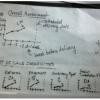Scrum
Articles
|
Plight of Product Owners in Medium and Large Organizations What prevents product owners in large organizations from functioning like product owners in startup companies, who quickly release new products in the market with lower budgets? |
Anupam Kundu
August 3, 2011 |
|
 |
We're Agile I always recommend to teams newly transitioning to agile that they keep every iteration the same length. This helps them learn to manage their time, and after a few iterations they'll start to get a rhythm. Hopefully, they'll learn to work incrementally, doing testing and coding concurrently as part of one development effort, so that user stories are finished throughout the iteration, and testing isn't pushed to the last day. |
|
|
It’s the Goal, Not the Role: The Value of Business Analysis in Scrum “Business analyst” is not a distinct role on Scrum or other agile teams. And yet, the goal for the team—to deliver high-valued product needs—requires strong business analysis skills. Ellen Gottesdiener and Mary Gorman describe the vital analysis work needed reach the goal, regardless of role. |
||
|
Adapting to Change in Your Agile Strategies Len Whitmore writes on using agile practices for the development of software. In the ten years since the Agile Manifesto, the agile development domain evolved, as evidenced by such things as the six levels of planning: strategy, release, iteration, daily, and continuous, with strategy appearing to be the least evolved of the planning levels. |
Len Whitmore
June 3, 2011 |
|
 |
Implementing Scrum (Agile) and CMMI Together CMMI and Scrum are two commonly used frameworks we have seen groups struggle with when using them together. This article describes how these frameworks aren't really at odds with each other and explains how implementation is the key to using them together. |
Neil Potter
February 18, 2011 |
|
A Tale of Two Product Owners The product owner role on agile projects is critical to the team and the project. The product owner's influence, performance, and behavior can set the stage for smooth sailing—or sink a project. In this article, Anupam Kundu shares two different product owner experiences to drive home the argument how their behaviors and practices can shape organizational culture—specifically for new product development and start-ups. |
Anupam Kundu
January 28, 2011 |
|
|
|
Harvesting Stakeholder Perspectives to Organize Your Backlog When Mary Gorman and Ellen Gottesdiener facilitated a game called The Backlog Is in the Eye of the Beholder for the Boston chapter of the International Institute of Business Analysis, both the players and the facilitators learned some important lessons in organizing a project requirements backlog. In this article, they describe the game and what it revealed, including the value of truly knowing your stakeholders. |
|
|
|
Software Project Estimation Tired of guesstimating your estimation process just to create a completion date management will accept? Jonathan Kohl takes the guess work out of estimations by focusing on uncertainties. It may sound counterintuitive, but the idea is to focus on the fact that all projects face unforeseen delays. The rigorous estimation process Jonathan describes here provides your team a way that ensures enough time is scheduled for development and a date for completion management can agree upon. |
|
|
How to Align Your Team with the Scrum Model A successful Scrum implementation requires proper understanding of Scrum processes within team and within all project stakeholders. Even after proper training and certification (CSM/CSPO) it’s really tough to achieve the success as intended. There is one common and important problem which has always been overlooked: the alignment of current team with Scrum the model. Because, vanilla-Scrum only describe what the role does in the process. |
Vinay Krishna
November 9, 2010 |
|
 |
Ready to Ship? On the surface, a Broadway musical, a newspaper, and software may not seem to have much—if anything—in common, but they have one common thread. All are delivered on a fixed schedule. But of the three, software tends to stray the most from the fixed schedule. In this week's column, Jeff Patton says that by focusing on the readiness of the entire product—as done in theatrical performances and when publishing a newspaper—and not just on the completion of the planned bits of work, you can produce software on a fixed schedule that you know is ready to ship. |






